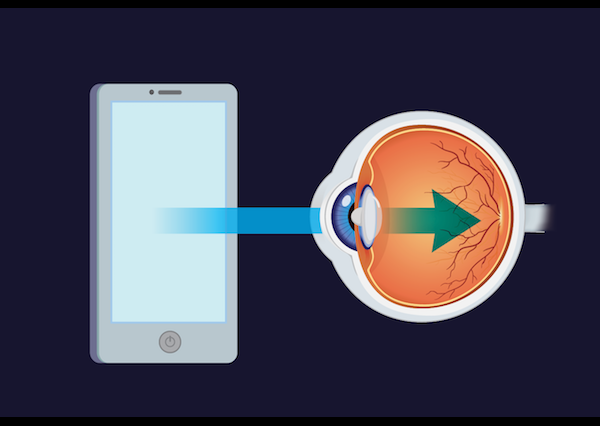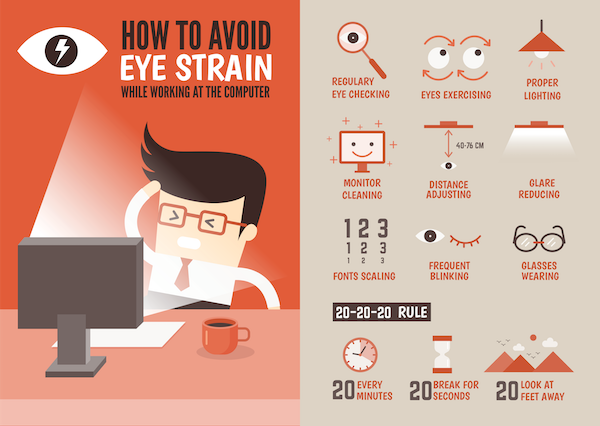Eye diseases and conditions
Computer Vision Syndrome


Computer Vision Syndrome (CVS) refers to the set of symptoms that can occur with prolonged use of a computer. These symptoms include eyestrain, headaches, blurry vision, dry eye, and neck/shoulder pain. These symptoms may be worsened by an uncorrected refractive error, which might mean you need glasses. However, you can have these symptoms even if you have good vision. Most often, the discomfort will resolve with discontinuing computer use, though not always immediately. If you work on a computer for more than two or three hours everyday, you are likely to experience at least some degree of CVS.
CVS is exacerbated by glare on the computer screen and poor posture/ergonomics. Also, the print on your computer screen may not be as sharp or the contrast may be poor, which contributes to eyestrain. The distance at which you work may also cause problems. If you are presbyopic and wear a bifocal or progressive (no line bifocal), you may find yourself adopting an abnormal posture or head tilt to see the screen clearly. There are specific lens designs that can address this problem. Treatment for CVS includes the proper spectacle prescription, an anti-glare cover for your monitor, anti-reflective coating on your eyeglasses to limit glare, and good posture. It is ideal to have your screen a few inches below eye level and 20 – 28 inches away. You will want to treat any symptoms of dry eye with artificial tears. CVS can also be minimized by taking frequent breaks. You should plan to rest your eyes 15 minutes for every two continuous hours of computer time. You should also take a break every 20 minutes, adjusting your focus out in the distance for about 20 seconds before resuming your work.

